I have had to decline nearly half of all coaching applicants in the last three and a half years because the expectations on what they thought could be achieved, and my opinion on what would realistically be achieved, simply could not be reconciled.
The reason for this huge disconnect is simple – the exceptional results of the drug-enhanced or genetically elite are promoted as being normal by the industry. We are told that when results don’t pan out to the expectations we were sold on, we just need to buy a new, more specialized training program (and maybe some more equipment), along with, of course, the appropriate supplement stack – because the one that we purchased before wasn’t right for our body type, or biology, or something like that.
Unfortunately, it seems to me that the effect of the industry’s marketing is so powerful that the majority of people need to go down the hard road and get screwed first before they are willing to listen to someone with a more realistic outlook.
The goal of this serial guide is to save you from taking that hard road. Using a similar categorization system that I use when working with clients I will help you identify your current physique condition, and then give practical recommendations on the path I think you should take (cut, bulk, slow-bulk, recomp for example) realistic expectations of what you can achieve, the common mistakes that people make, and what you should be aware of as you progress.
This is potentially going to save you time on your journey to getting the physique that you want. It’s going to get exceptionally detailed, and I sincerely hope that you find it useful.
Where This Guide Comes From
As I work online and do this full time I have been fortunate to have worked with a broad range of clientele over the relatively few years I have been doing this. I have gradually tightened up my area of focus to allow me to get even better at my niche – open-minded male strength trainees, no injuries, 20-55 age range. Of these people, I can usually identify them as being in one of 11 categories. – Now, you might consider that to be quite anal, and you’d be right. However, by being very tight and focused like this, I can get good at predictions for people, and that is what leads to happy customers and a good reputation. While the specifics often vary (everyone is an individual with their own personal challenges), the fundamentals of the action plans and the outcomes within a category usually follow the same general course.
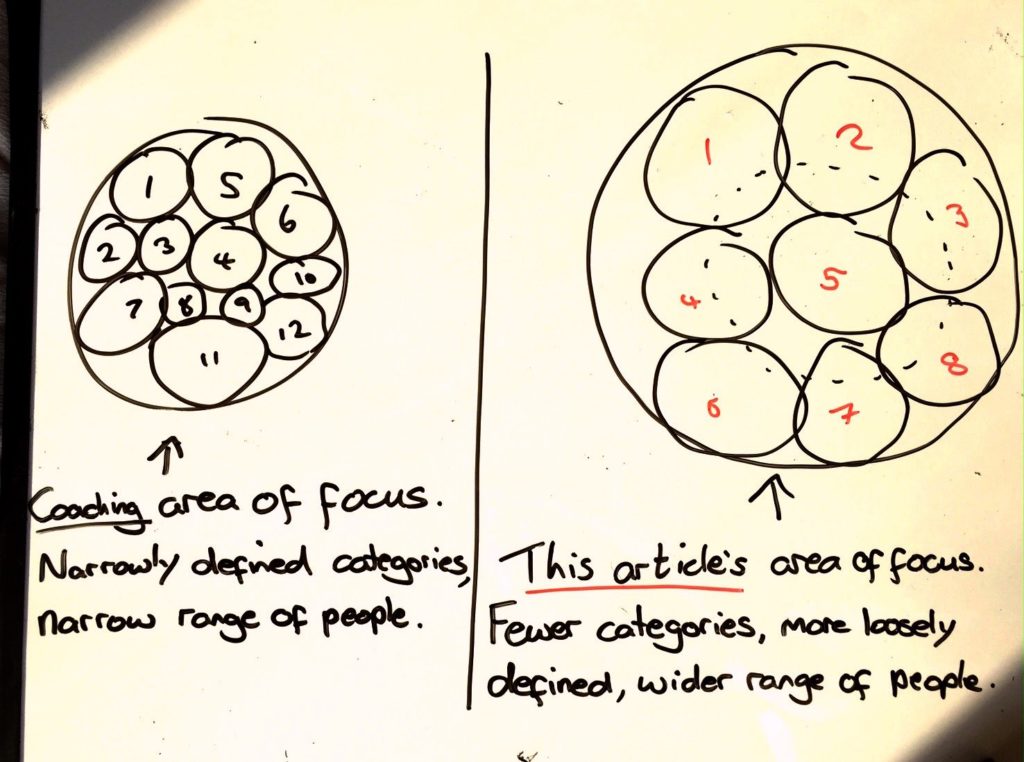
We’re going to use the same method in this article. However, the categories will be less tightly defined, and we will cover a broader range of people, including beginner trainees (skinny to obese) as well. For each category, I’ll give my advice on what direction I think you should go in, and what you are likely to achieve. – Basically, a more generalized version of what I do for coaching applicants.
The Categories That We Will Cover
- Stubborn
- Fat but muscled
- Muscled, a few pounds to lose.
- Skinny
- Shredded (Clear, defined abs.)
- Fat & weak
- Obese
- Skinny-fat
- Limbo/Purgatory
Definitions of these will come at the start of each section, some of which will be subjective, as an ‘ideal physique’ will differ from person to person.
Goal Setting Fundamentals
- Fat can be burned far quicker than muscle is gained. Muscle is denser than fat. Therefore you will measure smaller at the same weight if you have more muscle.
- The more fat you have to lose, the quicker you can lose it without losing muscle tissue. The less fat you have to lose, the more slowly you need to lose it to preserve muscle tissue. (See the, ‘How much fat can I lose per week?‘ table)
- People new to serious strength training will experience the most gains in lean body mass.
- Gains from strength training, even with excellent programming will become less and less as the years progress. (See the ‘Muscle growth potential‘ table)
- Strength gains/losses correlate reasonably well with muscle gains/losses.
- Maintenance of strength is indicative of muscle mass retention.
- People generally fail to achieve results, not because they have a bad plan, but often simply because it’s too hard for them to follow through with it.
- There is no getting around the Nutritional Hierarchy of Importance for Fat Loss and Muscle Growth (picture below) despite what your aunt Betty insists after reading ‘Grain Brain‘ and ‘Wheat Belly‘.
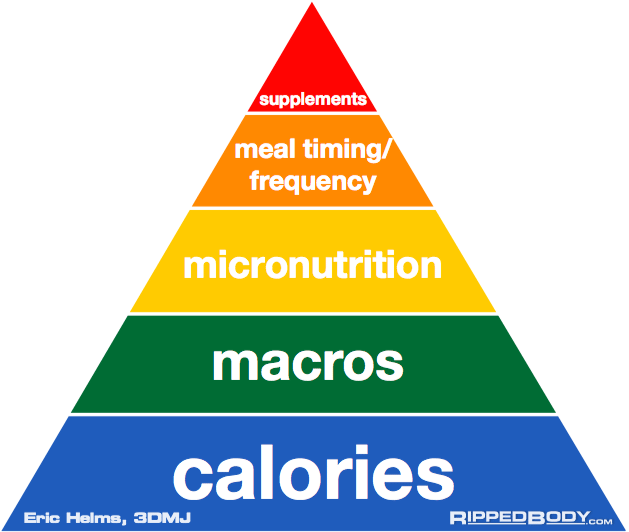
- Stress and poor sleeping habits have the potential to mess everything up regardless of what you do. The negative impacts scale with severity.
Why we look at averages, not outliers
What we have here is a bell curve illustrating different genetic potential.
There is no point in setting expectations about what can happen for the exceptionally genetically gifted, or the genetically screwed, cause the chances are that this isn’t you. And, even if you are one of the unfortunate ones, there’s honestly nothing you can do about it except to work that patience/ diligence muscle harder (though I am sure there is a supplement out there claiming to help you override your genetics of course). Some people will have a harder time losing fat than others, some people find it harder to gain muscle than others. You need to get on with creating the best you instead of worrying about everybody else out there.
One important thing to point out though – mindset has a very powerful effect on the body. If you believe that you can’t grow quickly, or get very strong, chances are that you won’t. So believe in yourself and train with the mindset that you are one of the lucky ones, as that will take you further.
I’ll be talking about average rates of progress, for the person that follows the advice on this site ‘to a T’ instead of tweaking things. I’m not going to talk about the best possible outcomes I have seen, nor what can be achieved if unsustainable strategies are used.
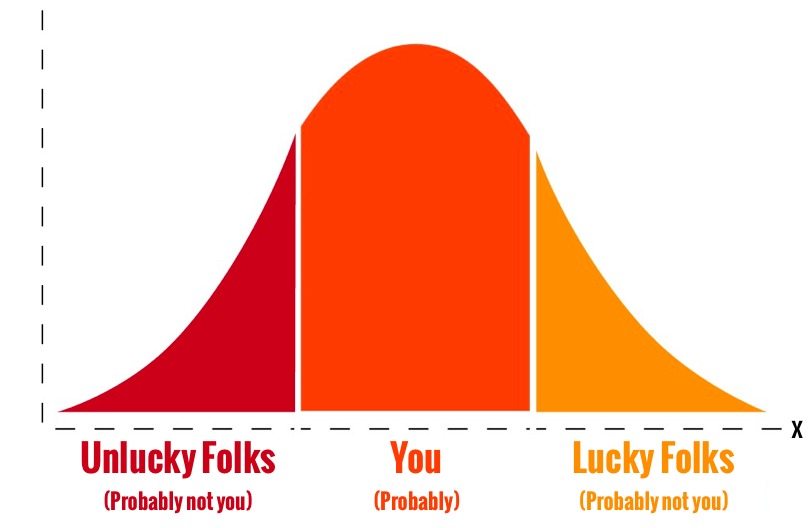
Identify Where You Are Now – Get On The Right Track – Then Go Crush It
Acknowledging your current physical condition is the only way to set up realistic expectations and build towards your long-term goals. Be honest with yourself when reading below. Everyone reading this, no matter what their body shape or size, is seeking improvement. Aside from this first classification (stubborn), I don’t see any particular category as negative and neither should you. On the contrary, correctly identifying where you are now and setting your plans accordingly is going to save you time in reaching your end goals.
Some people are going to be a mix of a couple of different categories, just do your best to read between the lines. I’ll explain the categories in roughly the order that I consider least to most complicated.
Category 1. Stubborn
‘Stubborn’ isn’t a reference to body-fat type, but to mental attitude. These people are unhappy with their lack of progress but refuse to change their diet or training method(s) because they are stuck in some form of dogma. Until their frustration overwhelms their stubbornness these people can’t be helped.
A subcategory of these folks are those that hold (fairly) firmly onto the belief that one style of dieting or training is suitable for all goals at all times. Three examples:
• The person that insists on low-carbing, at all times, despite their struggles in a lean-mass gaining phase.
• The guy that insists on keeping 5 CrossFit WODs in their weekly training plan while attempting to diet. This is ostensibly in an attempt to keep up their metabolic conditioning because… that’s what their favorite MMA fighter – with their entire team of experts around them and their job on the line – manages to do. You don’t want to do this. This completely knackers your recovery capacity when it’s in short supply, ramping up physiological stress, and it’s going to set you up for failure or injury.
• People that are bulking and have started to push the boundaries of what they can physically, comfortably eat, despite moving to more calorie-dense food choices that fit their macros, but remain adamant that they must eat within an 8-hour window instead of extending it. (These tend to be high NEAT responders, aka. ‘hard-gainers’)
This subcategory of folks are sometimes saveable with a little nudge in the right direction. But as the saying goes, you can lead a horse to water but you can’t make it drink. Sometimes people just need to fail multiple times before changing their ways. That can be an essential part of the learning process, and trying to push people into something will just fray your friendships.
If you think you might be in this stubborn category, if what you’re doing isn’t working, open your mind to changing it. Don’t try and force a “one size fits all” on yourself. Be sensible. Dieting isn’t easy and neither is gaining muscle. At the minimum, stack the deck in your favor.
Category 2. Fat, but muscled
Strategy: Cut
These guys are among the easiest and most satisfying clients to work with. The hard work is done, as they already have a muscular base, it’s just a case of helping them to reveal it. Often it’s these guys that have never been shredded before and never believed they could be and making this a reality for them is a great feeling. 12 weeks is rarely enough to get them down to shreds, but they often come back to me a few months after our work together with an e-mail and huge grin in the photos saying thank you.
If this is you, then shoot for the fat loss recommendations below based on your body fat percentage. I typically recommend 1-1.25lbs a week of fat loss, as higher than that tends to push the boundaries of what is sustainable in terms of adherence. Ideally, I want you to feel almost like you’re not dieting for the longest time possible.
| Body fat % | Maximum recommended fat loss /week |
| 20-30% | ~2 lbs / 0.9kg |
| 15-20% | 1.25-1.5 lbs / 0.45-0.7kg |
If you haven’t been dieting up until this start point, then there are likely to be some initial water and muscle glycogen losses due to the decreased carb intake. That will send your weight tumbling quickly in the first 7-10 days, which would have messed with your head, but now you’re prepared for it. You’re going to need to look for the average rate of weight loss over the weeks following the first week. Basically, throw out that first week of data.
Given that you’re an experienced trainee you are unlikely to make any significant muscle gains during the cut, so you can gauge progress by scale weight. I’d recommend that you still take body measurements because there may be some weeks where you don’t get changes in weight, but the stomach measurements change. A curious phenomenon but common. Some weeks you’ll lose more weight than others then, but it’s that 1-1.25lbs per week that you should shoot for.
You’ll need to reduce your training volume as your recovery capacity will be hampered due to being in a calorie deficit. Mentally that might be tough, as you’re clearly keen on training, and there still persists the bro-myth that when cutting you should increase training volume and intensity, but 3 days a week will suffice. Focus on the main compound movements and work to maintain your strength. Accessory exercises can and should be restricted more heavily than compound exercises. This will be enough to preserve muscle mass.
In the case of some very experienced strength trainees, there will likely be a loss of strength in their top sets. This is due to the mechanical disadvantage of being leaner (which these guys likely know about anyway), and though it depends on limb-torso length ratios, a decrease of up to 10% is not unusual for the larger guys. This is not to be confused with muscle loss.
You’ll need to buy yourself a new wardrobe, so be prepared for that expense.
Client Examples
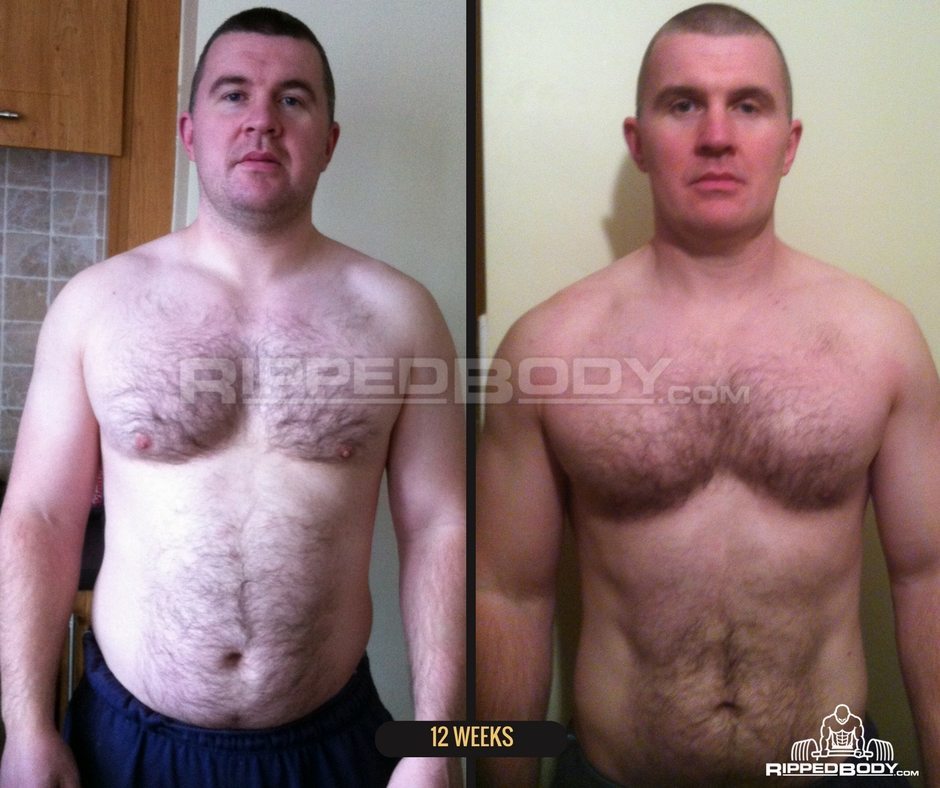
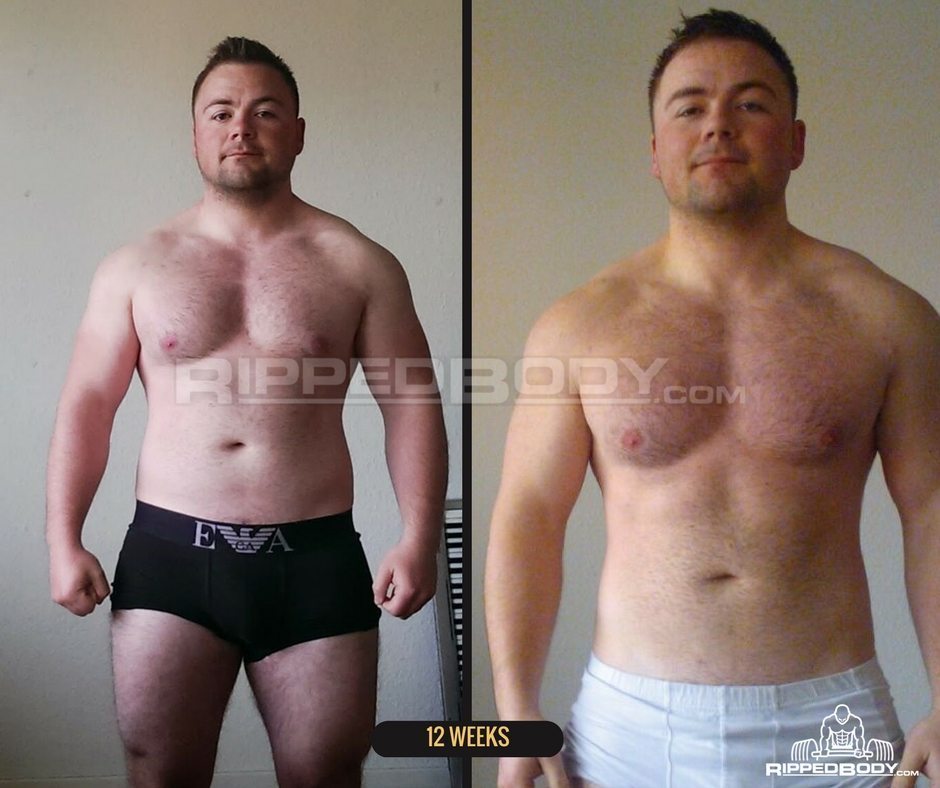
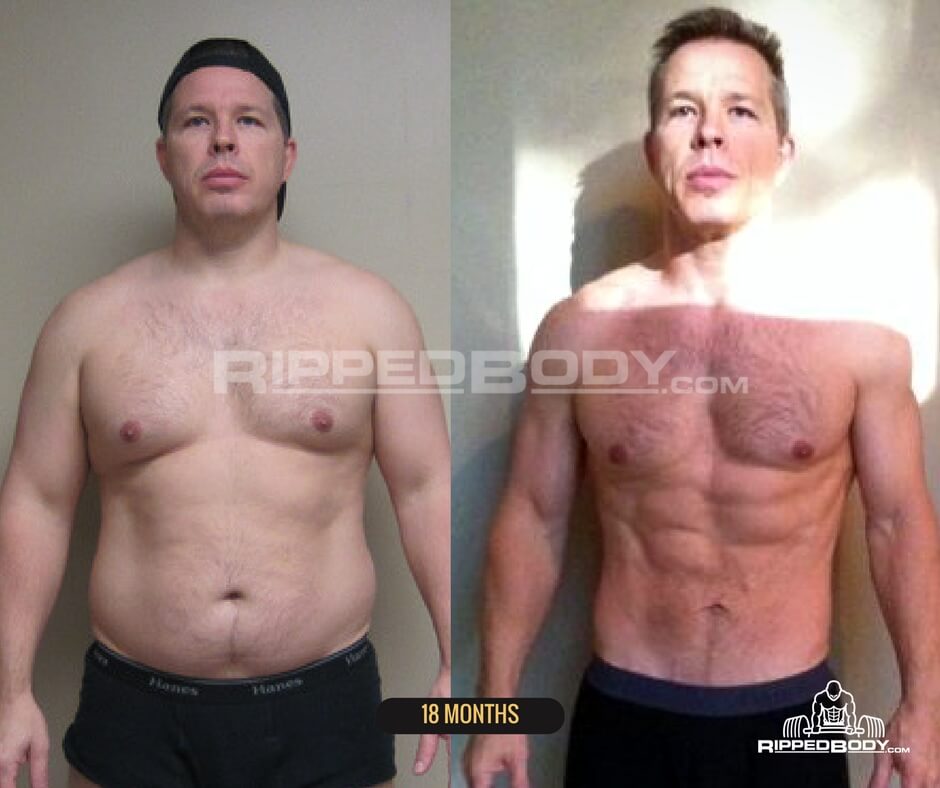
Note that John started off at a much higher level of body fat than Peter and Theis above, hence the longer time frame. Technically he was obese, but he had a good amount of muscle mass so I put him in this section.
Category 3. Muscled, a few pounds to lose
Strategy: Cut
These guys have many similarities to the ‘fat, but muscled’, category two folks. Though due to being leaner they often take it to shreds (or very close) in our 12-week time frame. Some of these people are as lean as they have ever been and simply haven’t been able to take it further, others have been shredded before but want to do it in an easier and more sustainable fashion.
Technically there is nothing more difficult here than with those carrying more fat, though there are certain things to be aware of. For those that are struggling to get leaner, first I offer you two questions:
- Are you counting your calories and macros, or have you gotten to where you are now without doing so? – It may be time to start so that you remove the guesswork from things. This will be a pain in the arse for about three weeks, but after that, you’ll find it a lot easier. (Refer to my guide, “How To Count Macros“)
- Have you had any diet breaks? If not then you should consider one. See here for my diet break guidelines. You’ll often find afterward you will feel refreshed mentally, any food cravings you’ve been having are gone, and metabolically it’s beneficial for setting you up to shoot for this next level of leanness. Just note that you’ll have a large rise in body weight when you start the diet break due to the increase in carb intake (and saltier foods in likelihood) and thus water balance and glycogen stores. There is no need to panic. It will come off rapidly again when you resume the diet.
I generally recommend 0.75-1.25lbs a week as a targeted fat loss rate for these folks, the lower end of the range as they get leaner.
| Body fat % | Loss /week |
| 12-15% | 1-1.25 lbs / 0.45-0.6kg |
| 9-12% | 0.75-1 lbs / 0.35-0.45kg |
| 7-9% | 0.5-0.75 lbs / 0.2-0.35kg |
| <7% | ~0.5lbs / 0.2kg |
Body measurements become increasingly important as you get leaner, as the mirror will mess with your head. There are two main reasons for this. Firstly, with the cyclical nature of the diet you’ll likely see yourself looking leaner on some days than others which can send some folks into a panic if they are not prepared for it. Secondly, as you start to get to 10% and under the fat will often come from places that you can’t easily see, like the lower back and thighs. Assuming you’ve been using my recommended 9 points of measurement, you’ll notice that you start to see more changes on the lower stomach measurements than at the navel and above.
Diet breaks should be more frequent the leaner you get, every 6-8 weeks or so.
Assuming you aren’t stressed at home or work and are sleeping well, fat loss should be fairly linear down to shreds. The difficulty is simply in tracking it, so I highly recommend taking your weight as an average of each day for the week, as well as using the tape measure. Patience and consistency are all that is required.
As with the ‘fat, but muscled’ category, you will likely need to reduce training volume. Again, three days a week should be plenty for muscle mass retention.
Client Examples
12 Weeks
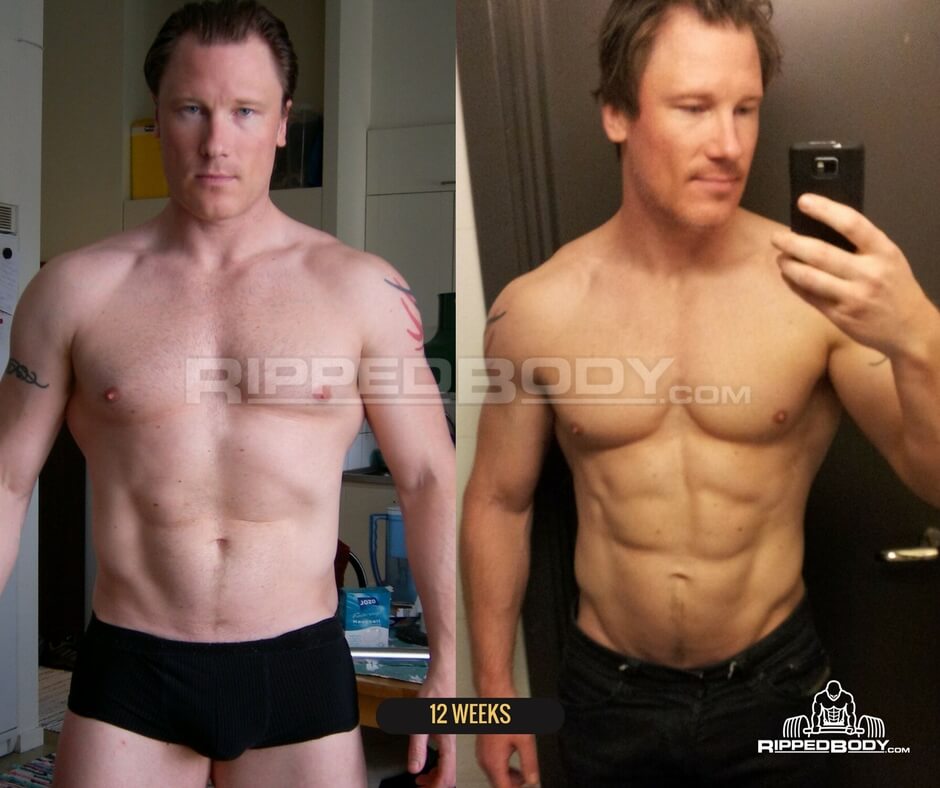
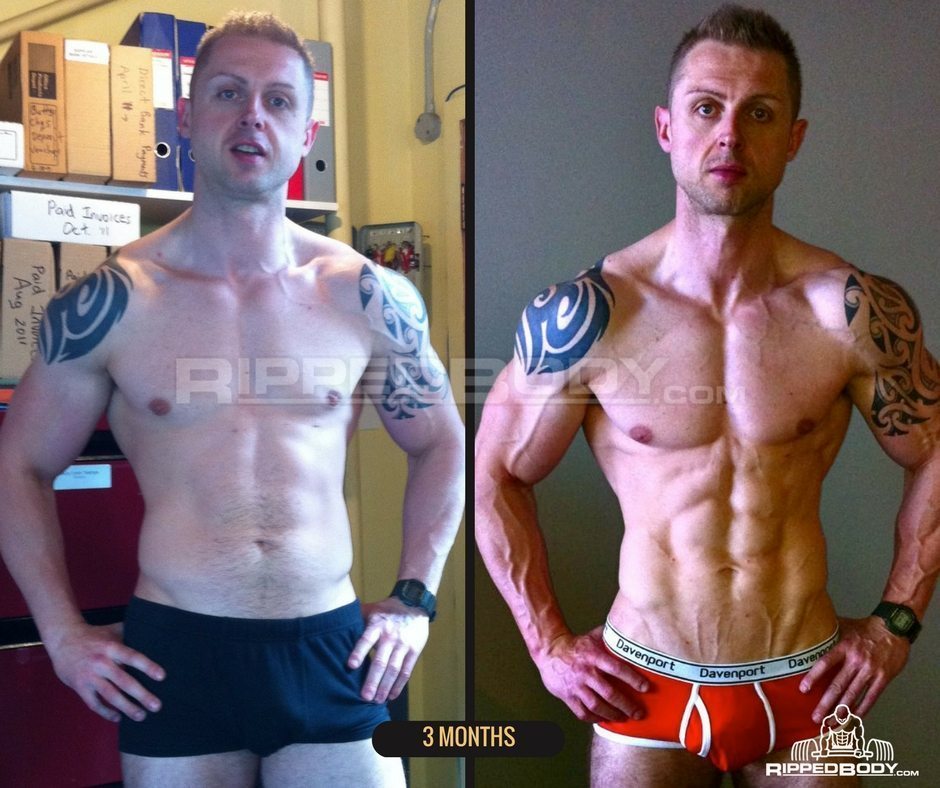
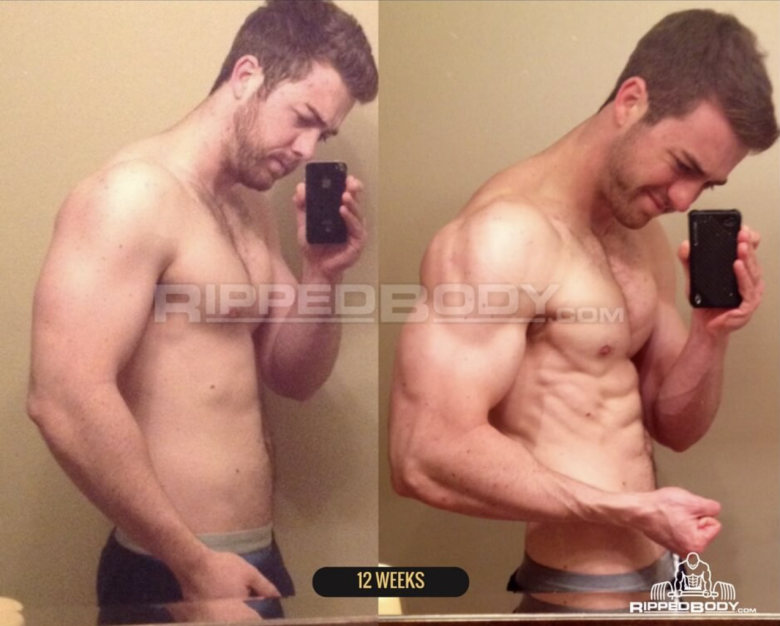
Competitors


For Phil (second from bottom) note how slowly it is necessary to cut at this point of leanness in order to maintain muscle mass. The changes were subtle, but these are the differences in levels of conditioning that judges look for. The bigger story here was his switching from 6 meals a day, training 6 days a week to 3 days training, two meals.
***
There was a long time in my life when I was stuck spinning my wheels – I wasn’t making any progress and I just couldn’t see it. Or maybe I just couldn’t admit it. It took very honest comments to wake me up so that reality. Waking up to reality and knowing had to get yourself out of that situation a two very different things though. In the next part, I’ll explain exactly how I got myself out of the skinny trap and you can too.
Thank you for reading. Questions welcomed in the comments.
- Why You Are Still Skinny, What You Need to Change, and What Pitfalls You Need to Avoid.
- How to Slow-Bulk – Avoiding the Dream-Bulk Trap

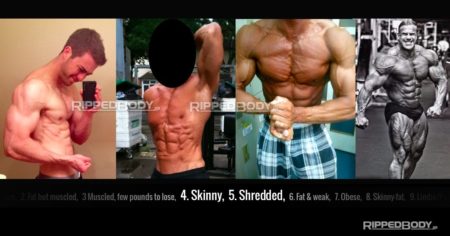
Privacy policy.